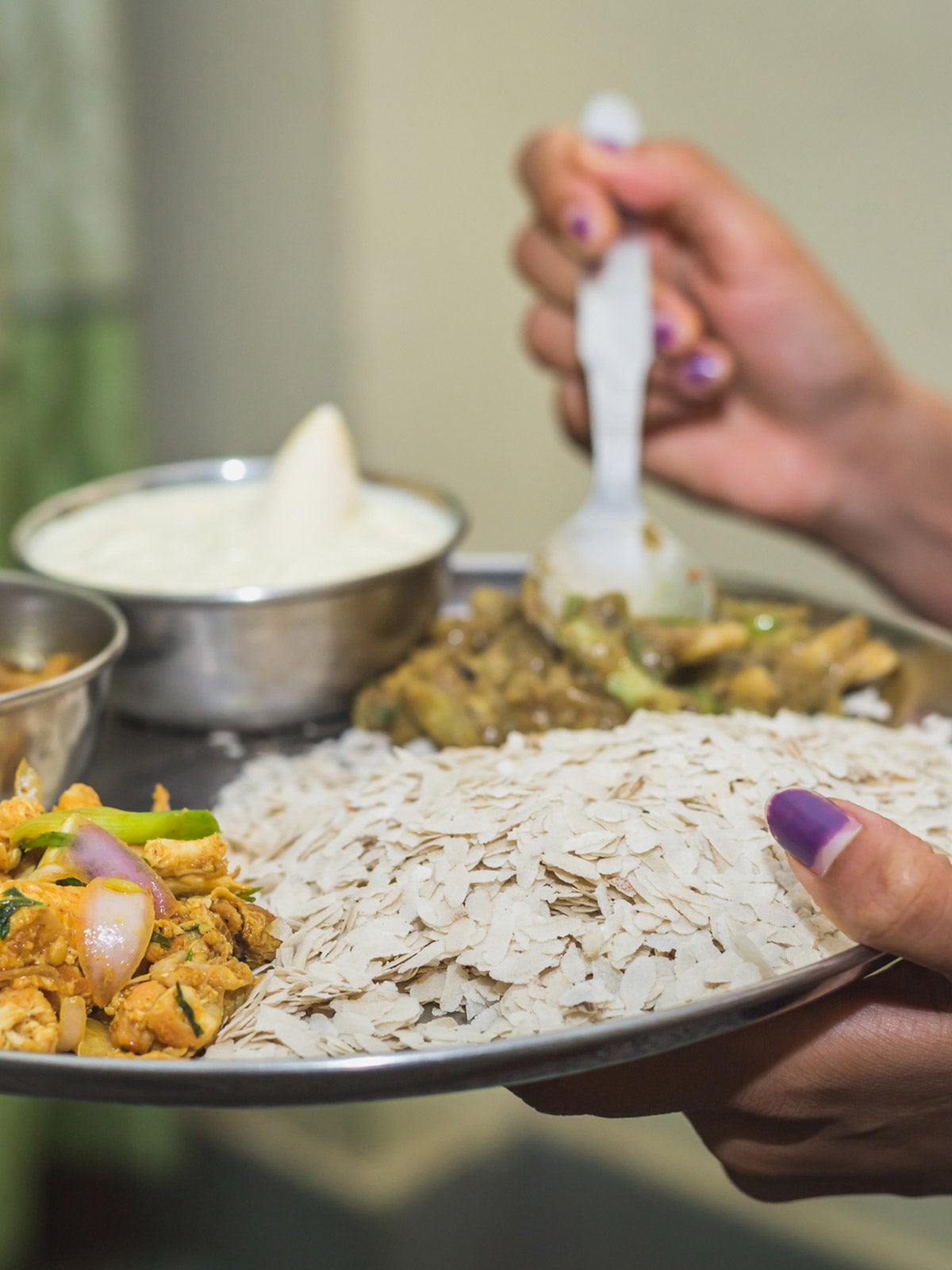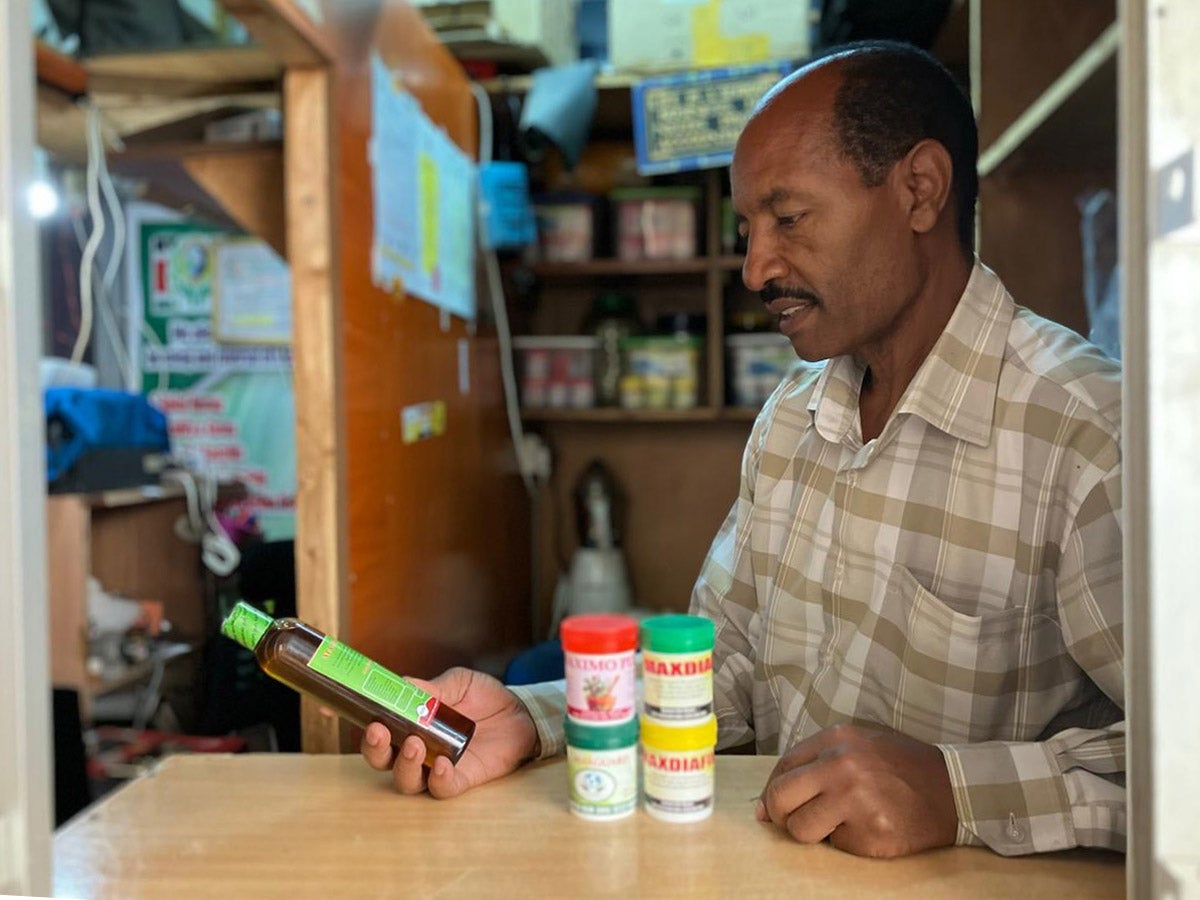
Research
Good nutrition is key to fight against tuberculosis
In the global fight against tuberculosis, researchers have uncovered new evidence of a powerful weapon: food.
Tuberculosis has long been known as a social malady, meaning well-ventilated housing, good sanitation, and proper nutrition are all important to preventing the disease’s spread. But a new 13,000-person randomized trial in Jharkhand, India provides unprecedented evidence that giving raw calories to underweight patients reduces their risk of death, and feeding their household contacts prevents them from developing tuberculosis in the first place.
“[Nutrition] is a very basic intervention, but an important and powerful one,” says the study’s co-author, Anurag Bhargava. “It’s commonsense, but we lost that focus [on nutrition] in favor of developing vaccines and drugs.” He says tuberculosis largely disappeared from industrialized nations a century ago because of improved living conditions, including a decline in food insecurity. With the advent of effective antibiotics, he says the global efforts to eradicate tuberculosis shifted to treatment, rather than prevention. His team’s study could tilt the scales again in favor of non-medical solutions to the world’s deadliest infectious disease.
Sign up for Harvard Public Health
Delivered to your inbox weekly.
The Reducing Activation of Tuberculosis by Improvement of Nutritional Status (RATIONS) trial, the results of which were published in two Lancet journal articles in August, enrolled 2,800 patients with confirmed pulmonary tuberculosis and 10,345 of their household contacts, identified across 28 tuberculosis treatment centers in Jharkhand. Each patient received food rations equal to 1,200 calories and 52 grams of protein daily for at least six months. About half the households in the trial also received monthly rations containing 750 daily calories per person. The other half received nothing.
The results were striking: Patients who gained weight in the first two months of treatment cut their mortality risk by 60 percent. And the households receiving additional food baskets developed 40 percent fewer new cases of tuberculosis than the control group. Just as important, 93 percent of the patients in the study successfully completed their treatment—a major achievement in a country where it’s estimated that less than half of people with tuberculosis complete treatment.
Studies from multiple countries have shown undernutrition is a leading risk factor for tuberculosis. India is estimated to have the highest number of underweight people in the world; it also bears the world’s highest tuberculosis burden, with 27 percent of cases and 25 percent of tuberculosis deaths globally. “While HIV is the leading risk factor for developing tuberculosis in South Africa, for example, the number of undernourished people in India means undernutrition is clearly the leading cause,” Bhargava says. One study found that 36 percent of Indian children under five years old were underweight, and nearly 40 percent were stunted. The issue is especially urgent in India’s rural areas, where rates of undernutrition are higher.
Bhargava worked as a physician in rural India for 15 years, first in the western state of Gujarat, then in Chhattisgarh, a state bordering Jharkhand to the west; both states have high poverty rates and large indigenous populations. “I was seeing patients with the most severe malnutrition I had ever seen … and we were diagnosing 600 TB patients a year in a single [health] center. It became very clear to me that it’s the whole social dimension of the disease, in terms of why people develop TB and why people continue to die of it,” he says.
His experience in Chhattisgarh informed his team’s approach to the trial in rural Jharkhand. More than a third of participants were underweight, nearly 20 percent severely so, and two-thirds belonged to indigenous communities. Food, says Bhargava, is critical for patient survival in places like Jharkhand. “With patients this underweight, if you don’t provide nutrition support as part of standard care, these people are not likely to survive,” he says.
Madhukar Pai, director of the McGill International TB Centre, has argued that expanding food support to tuberculosis patients and their families could act like a “vaccine” against the disease, which is especially important as new TB cases soar in the wake of COVID-19 disruptions to tuberculosis detection and care. The World Health Organization estimated a 41 percent decline in case reporting in 2020, jeopardizing the goal to end tuberculosis globally by 2035. For India, undiagnosed cases present a major challenge: 45 percent of untreated infections result in death, and one person with infectious tuberculosis can spread it to 15 people a year. But tackling undernutrition—for patients, their households, and the general population—could act as a significant prophylactic measure.
In 2018, the Indian government launched a program to provide tuberculosis patients with $6 per month of medical treatment (about half the cost of food baskets provided to patients through the RATIONS trial). Pai says that financial support is a good start, but expanding benefits through existing programs, like India’s vast system of ration shops, would go a long way towards tackling food insecurity and preventing new TB cases. “I am hoping the Indian government, which funded the trial, acts on these findings and makes sure people with TB get food,” he said in an email.
In fact, a parliamentary committee recommended in September that the government require the National TB Elimination Programme to provide universal access to nutritional assessment and support for all patients and their families—a major step forward, and one based explicitly on the RATIONS trial findings.
Bhargava is hopeful the study will provide the spark for addressing undernutrition in South and Southeast Asia more broadly. “[Nutrition] is not a new drug. It’s not a new vaccine. It’s not a new intervention,” he says. “If we address food security, especially for communities vulnerable to tuberculosis, we will have a significant impact almost immediately.”
Top photo: Idealnabaraj / iStock


